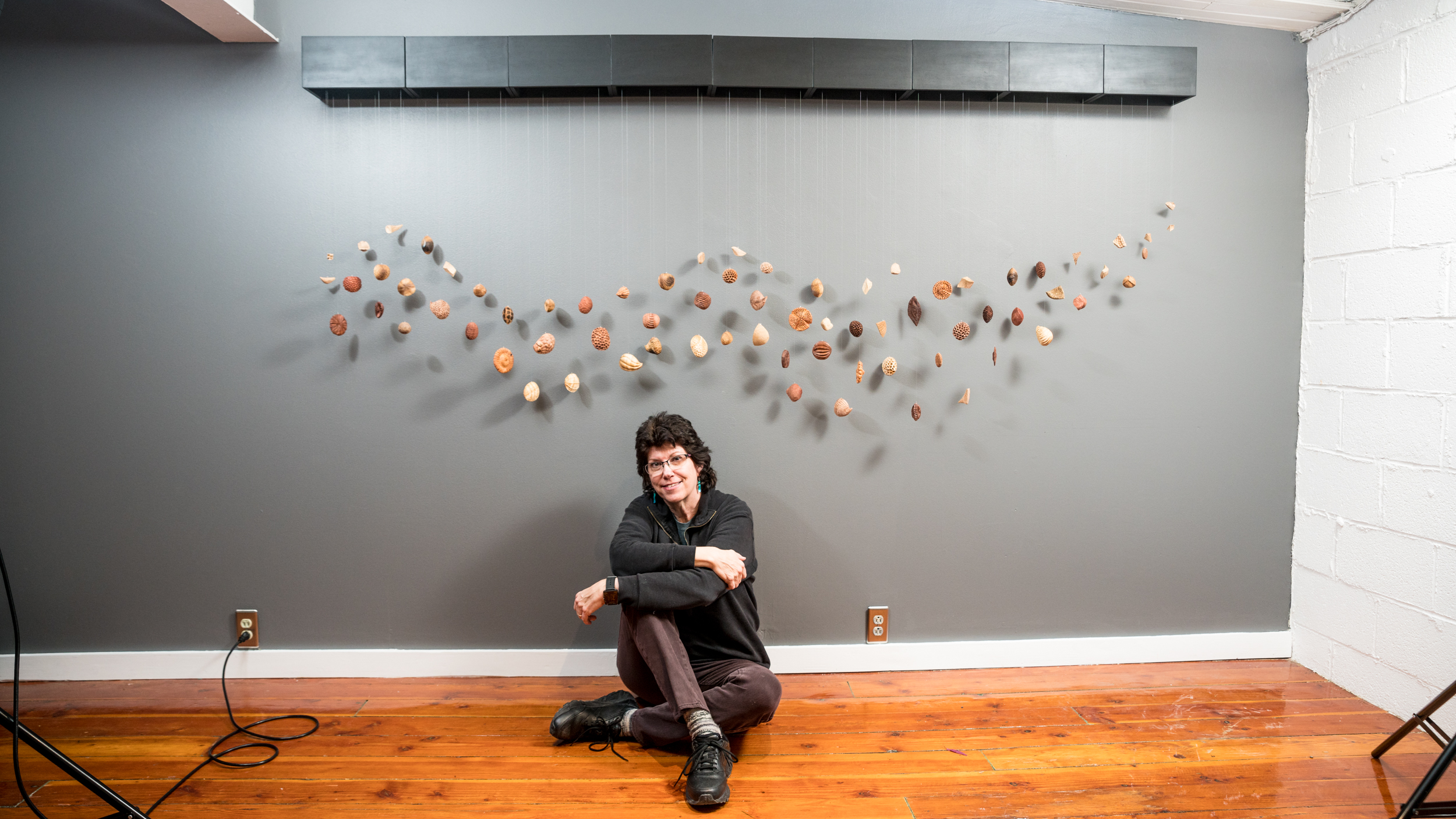I did my WIT Presents session last Saturday. It was a lot of fun to put together my slide show and to think about my journey as an artist. One thing we sometimes forget as artists is that we all start from the same place. For woodturning that means that we learn how to use our tools, how to make beads and coves, how to turn that first bowl or hollow form, or whatever. After awhile the techniques we use in turning become second nature - we no longer have to think about how to make a cut, how the wood will behave, or how to achieve a pleasing form. Each day at the lathe brings new achievements and new challenges.
For those of us who develop a recognizable style of work, the primary challenge we face is how to continue to grow as an artist, to move beyond what we've done before but to still have a body of work that is recognized as our own.
I spent a lot of time in my presentation talking about how to find one's voice. I'll pass along the words of wisdom I gleaned from Jacques Vesery's AAW symposium rotations many years ago, and what I've incorporated into my own practice - "use what you know."
We all have unique life experiences, which sometimes include different ways of interpreting the world, or seeing patterns in nature, architecture, geometry, the human experience, etc. While some are content to imitate the works of artists they admire, most of those artists would probably prefer to not have their body of work copied. Many recognizable styles have been developed over the course of decades, by trial and error, and with lots of time invested in practice.
We have a sharing community. Artists teach or demonstrate techniques for an audience or a group of students all the time - it's one aspect of the work that creates a viable money stream. Woodworkers tend to follow step-by-step instructions published in magazines, on websites, or in videos, from live demonstrations, or from taking a class. It's only natural to want to create the works one admires. I will only point out that there is a real difference between technical ability, the craftsmanship of making, and artistic ability - that spark of creative energy that builds a unique and recognizable body of work. I believe that everyone who has technical ability has the potential to move beyond imitation of another's work. One only has to believe in one's self, and to explore the things that are unique to their experiences in life.
I really like the idea of art as a practice. To be competent, to develop creativity, to explore new design ideas, it really does take practice - hour upon hour upon hour..... it seems like forever. I find this aspect of making art the most rewarding.
If you'd like to see the video of my presentation, you can click here


